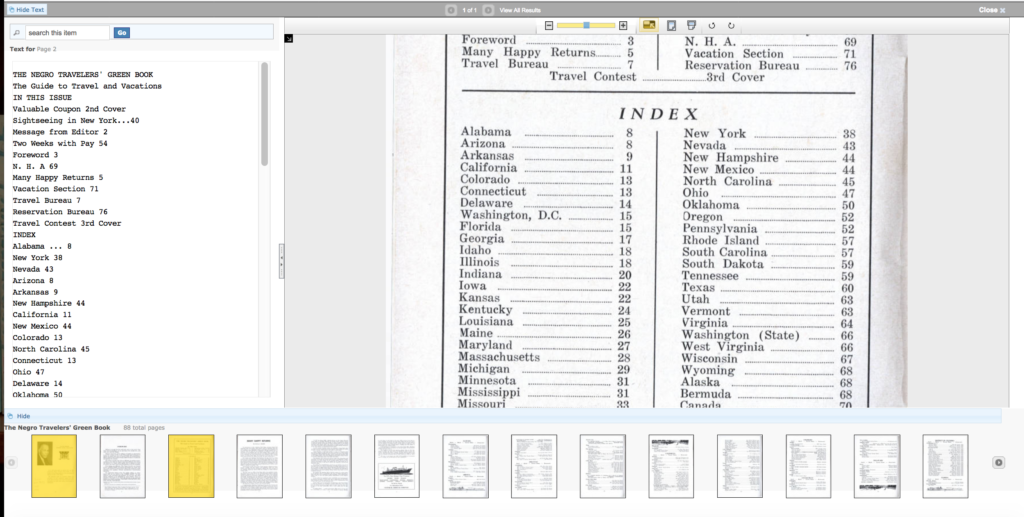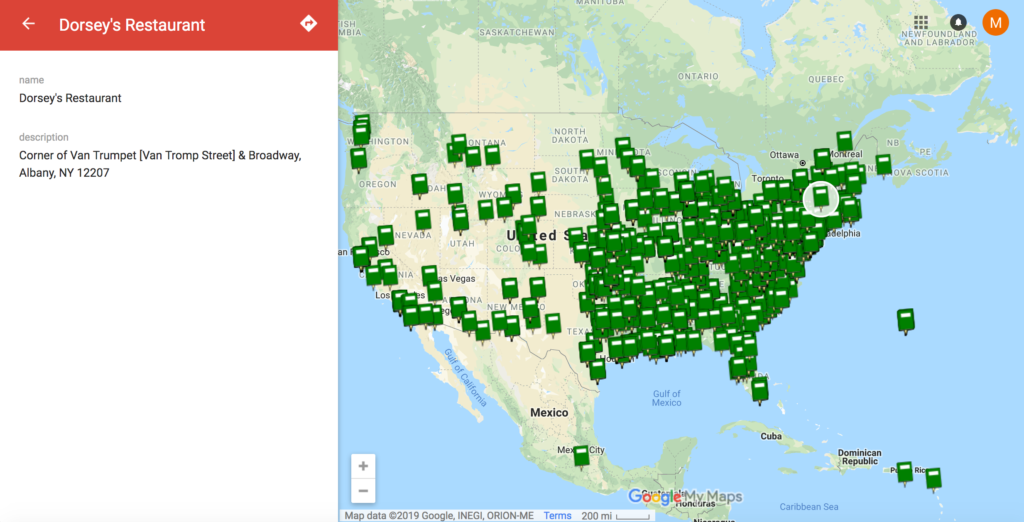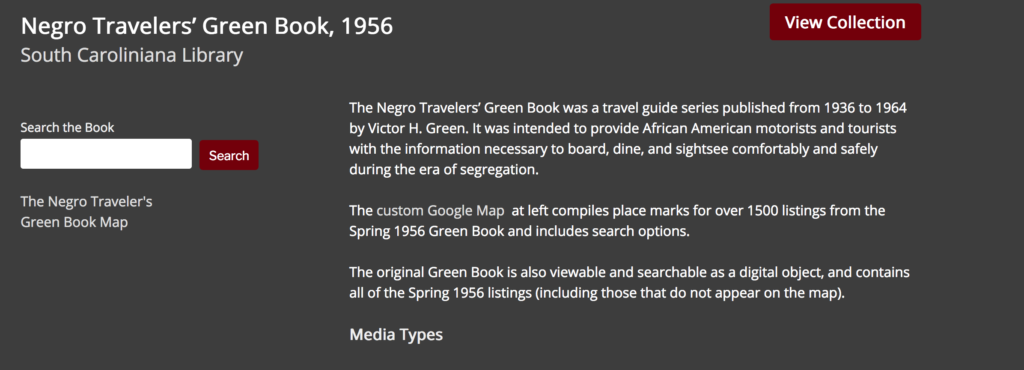Project Review: Negro Travelers’ Green Book, 1956
The Negro Travelers’ Green Book, 1956. https://digital.library.sc.edu/collections/the-negro-travelers-green-book-1956/. Created and maintained by the University of South Carolina Library, Columbia, South Carolina, https://sc.edu/about/offices_and_divisions/university_libraries/index.php. Reviewed February 4, 2019.

The Green Book is a special collection at the University of South Carolina and is currently part of a greater exhibit created in honor of the film The Green Book which was recently released. The Negro Traveler’s Green Book was a book which listed safe addresses of businesses where African Americans would not be discriminated against. The book was created by Victor Green in order to ensure the safety of African Americans while traveling. The entirety of the Green Book collection is a 1956 edition of the periodical which has been completely digitized, amounting to 83 pages in total. The book can also be searched for specific words, making navigation easy. Each page can also be zoomed in and out as well.
Like the physical exhibit hosted at the University of South Carolina, the digital collection is also partnered with other collections available at the University. For example, the webpage features the heading “topics” under which topics such as Civil Rights and Travel and Leisure are listed, these links connect to relevant collections, such as the papers of AME Minister Eugene Avery Adams, when the topic “Civil Rights” is selected.

The collection also features a google map which shows the location of each place listed in the 1956 Green Book. This allows one to easily visualize which places would have been safest for African Americans to travel during this time, such as many locations in the north east. Each location can also be clicked on to give the name of the safe location and an exact address, such as Dorsey’s Restaurant in Albany, New York. Since the map is connected to google, there is even a link which will provide directions to the selected place from your current location.

I believe that although the Green Book is listed on a University Library’s webpage, I do not believe it is intended solely for scholars. The digital collection is done in concurrence with an exhibit open to the public hosted at USC itself inspired by the recent release of the film The Green Book, therefore, I feel as if the page is directed not just at scholars, but the general public as well. The main page also gave a general overview of the topic itself, mentioning the recent film, hinting as to its general audience.
The site itself is very interactive, as it has several links leading to other related collections, however, the most interactive aspect is the google map which shows the locations of over 1500 places listed in the Green Book itself. Not only does it show where the location is located, but when clicked on gives the name of the location, its exact address and even directions to the location. This map allows the reader to better understand the magnitude of the Green Book beyond simply reading the names of the locations in print. Seeing the pins listed all over the U.S. allows the reader to better understand the magnitude of the Green Book’s reach.
3 Comments
Maeve Kane
Where did you see the reference to the film? The project was up long before the film came out, so they probably updated their page.
What do you think visualizing the distribution, with more locations in the East and south, does for understanding how people traveled?
Merissa Marthage
I found the reference to the film on USC’s library homepage where they discussed events and exhibits happening at the library, with the release of the film, the library created an exhibit entitled “Green Book: African-American Travel Experiences” to display their special collections. Here is the link to the page https://sc.edu/about/offices_and_divisions/university_libraries/exhibits_events_news/news/2018/greenbook.php.
The distribution shows where more people were traveling to. For example, the industrialized northeast is densely packed with the pins showing that many may travel there for the cities. I believe it also demonstrates where there was more economic opportunity for African Americans as the Green Book was created for travel by automobile meaning that one had to own and be able to afford a car in order to travel.
Maeve Kane
I missed that mention, thank you!